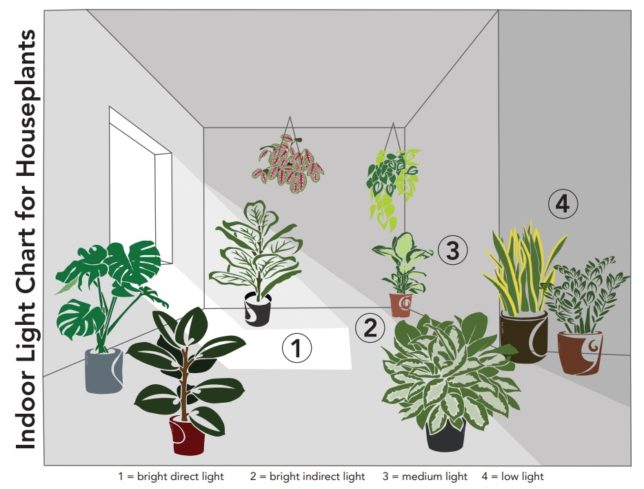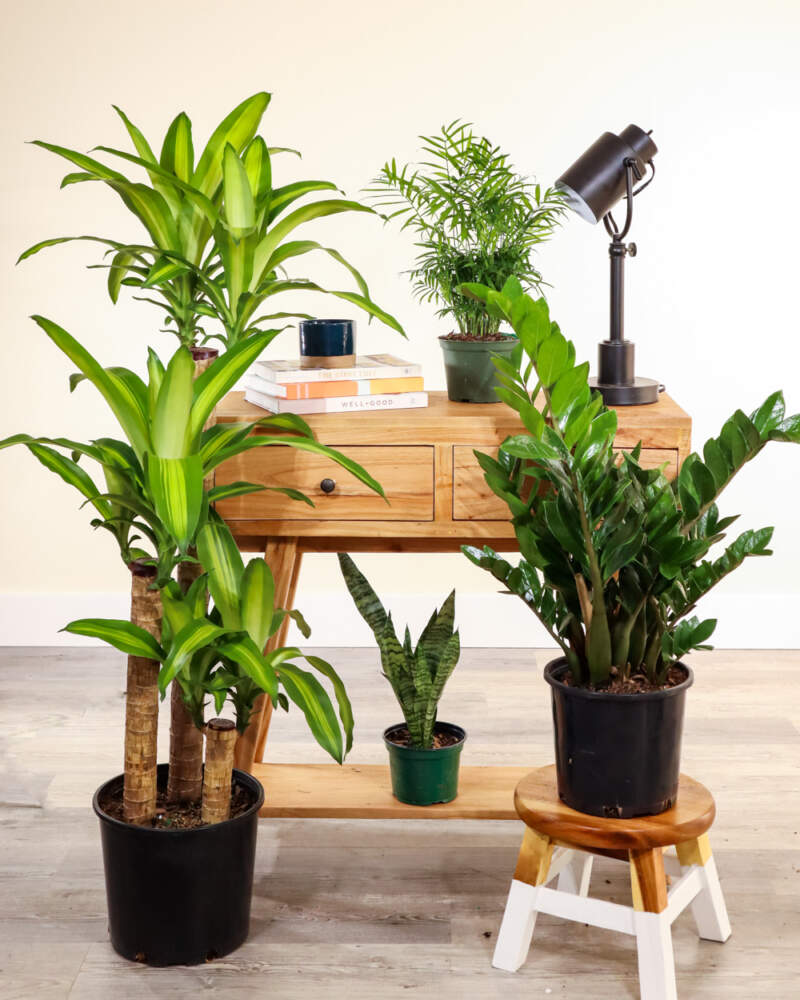Best Low-Light Indoor Plants That Thrive with Minimal Sunlight
Best Low-Light Indoor Plants That Thrive with Minimal Sunlight
Blog Article
Uncover the Keys of Low-Light Indoor Plants and How They Boost Your Setting
Low-light indoor plants have actually garnered increasing attention for their unique ability to improve both aesthetic charm and environmental quality within homes and workplaces. These durable types, including the Serpent Plant and Peace Lily, not only thrive in tough illumination problems but likewise play a critical duty in air purification and psychological wellness.
Advantages of Low-Light Indoor Plants
Although many individuals assume that interior plants need plentiful sunshine to flourish, low-light indoor plants use a plethora of benefits that make them perfect for various environments. One of the primary advantages is their adaptability; they can flourish in spaces with restricted natural light, such as offices, basements, or spaces with small home windows. This feature enables individuals to boost their environments with greenery, adding to enhanced aesthetic appeals without the need for extensive lighting adjustments.
Furthermore, low-light interior plants can dramatically enhance interior air quality by launching and filtering hazardous toxic substances oxygen, making living areas healthier. The existence of plants has actually been linked to better sensations of peace and emphasis.
In addition, low-light plants commonly require less upkeep than their sun-loving equivalents, making them perfect for busy people or those brand-new to horticulture. Their strength enables them to flourish with marginal treatment, therefore giving a gratifying experience for plant lovers and amateurs alike. In summary, low-light interior plants serve both practical and aesthetic objectives, making them beneficial additions to any area.
Top Low-Light Plant Varieties
Low-light interior plants been available in a range of varieties, each offering distinct qualities and benefits suited for dark settings. Among one of the most prominent varieties is the Serpent Plant (Sansevieria), recognized for its air-purifying capacities and building fallen leaves. This durable plant grows on disregard and can tolerate a large range of light conditions.
An additional superb option is the ZZ Plant (Zamioculcas zamiifolia), which includes glossy, dark eco-friendly fallen leaves and is highly drought-tolerant. Its versatility makes it a favored for workplaces and homes with restricted sunlight.
The Pothos (Epipremnum aureum) is likewise a top challenger, with its routing creeping plants and heart-shaped leaves - Best low-light indoor plants. This functional plant can be educated to climb up or cascade, adding aesthetic passion to any type of space

Care Tips for Low-Light Plants
Looking after low-light indoor plants calls for a nuanced understanding of their particular requirements to make certain ideal growth and vitality. First, it is vital to select the right potting mix, as a well-draining soil is crucial to avoid root rot. A mix made for houseplants, commonly having peat moss and perlite, works well for a lot of low-light selections.
Watering is an additional crucial facet of treatment. Low-light plants normally need less frequent watering contrasted to their sun-loving counterparts. It is advisable to examine the top inch of soil; if it feels dry, it's time to water. Overwatering can bring about difficulties such as mold and origin degeneration.
Fertilization should be approached with care. During the growing period, a watered down liquid plant food can be applied monthly, but in winter season, numerous low-light plants enter inactivity and need little to no fertilizing.
Finally, it's vital to periodically clean the fallen leaves to get rid of dirt, enabling for better light absorption. By sticking to these care tips, you can cultivate a thriving atmosphere for your low-light indoor plants, enhancing both their look and long life.
Enhancing Air High Quality With Plants
Interior plants play a significant role in enhancing air quality within homes and office. With the process of photosynthesis, these plants absorb co2 and moved here launch oxygen, adding to a healthier atmosphere. In addition, specific low-light indoor plants possess the ability to filter damaging pollutants, such as benzene, formaldehyde, and trichloroethylene, which are commonly located in interior environments.

Furthermore, the visibility of interior plants can enhance humidity levels, which helps reduce completely dry skin and respiratory concerns, even more boosting overall wellness. This capacity to boost air quality not just promotes physical wellness but likewise sustains mental wellness.
Including low-light indoor plants into your living and functioning rooms can bring about a much more lively and invigorating atmosphere (Best low-light indoor plants). Purchasing these all-natural air purifiers is a straightforward yet efficient technique for improving interior air quality and cultivating a healthier way of life
Creating a Serene Indoor Space
The integration of plants into living spaces not just enhances air quality however additionally adds to a relaxing environment. Low-light indoor plants, such as snake plants and pothos, are specifically effective in developing a tranquil setting, as they grow in problems that may or else be unwelcoming for various other greenery. Their lush foliage offers a soothing visual, lowering tension and promoting relaxation.
Including these plants into your office or home can stimulate a sense of tranquility and well-being. Purposefully positioning them in areas where you spend substantial time, such as living offices or spaces, enables for an immersive experience with nature, which has been shown to boost state of mind and cognitive function.
Moreover, the gentle movement of leaves in reaction to air movement can develop a dynamic aesthetic component that enhances the general ambiance. Think about making use of a range of plant heights and structures to include deepness and interest to your area. With thoughtful placement and care, low-light interior plants can change any type of area into a tranquil refuge, promoting not only aesthetic contentment yet likewise emotional and mental wellness.

Final Thought
Integrating low-light interior plants into different settings returns considerable benefits, including improved air high quality and improved visual allure. The transformative power of low-light plants emphasizes their value in improving both property and have a peek at this site work-related setups.
Although lots of people assume that interior plants call for bountiful sunshine to thrive, low-light indoor plants supply a wide range of benefits that make them excellent for various atmospheres.Moreover, low-light indoor plants can considerably enhance indoor air top quality by filtering system unsafe contaminants and launching oxygen, making living spaces healthier. In addition, specific low-light indoor plants have the capacity to filter harmful contaminants, such as formaldehyde, benzene, and trichloroethylene, which are commonly located in indoor environments.
Low-light indoor plants, such as serpent plants and pothos, are especially efficient in developing a tranquil atmosphere, as they flourish in problems click to find out more that may otherwise be unwelcoming for other greenery.Including low-light indoor plants into different settings yields significant benefits, consisting of boosted air top quality and improved aesthetic allure.
Report this page